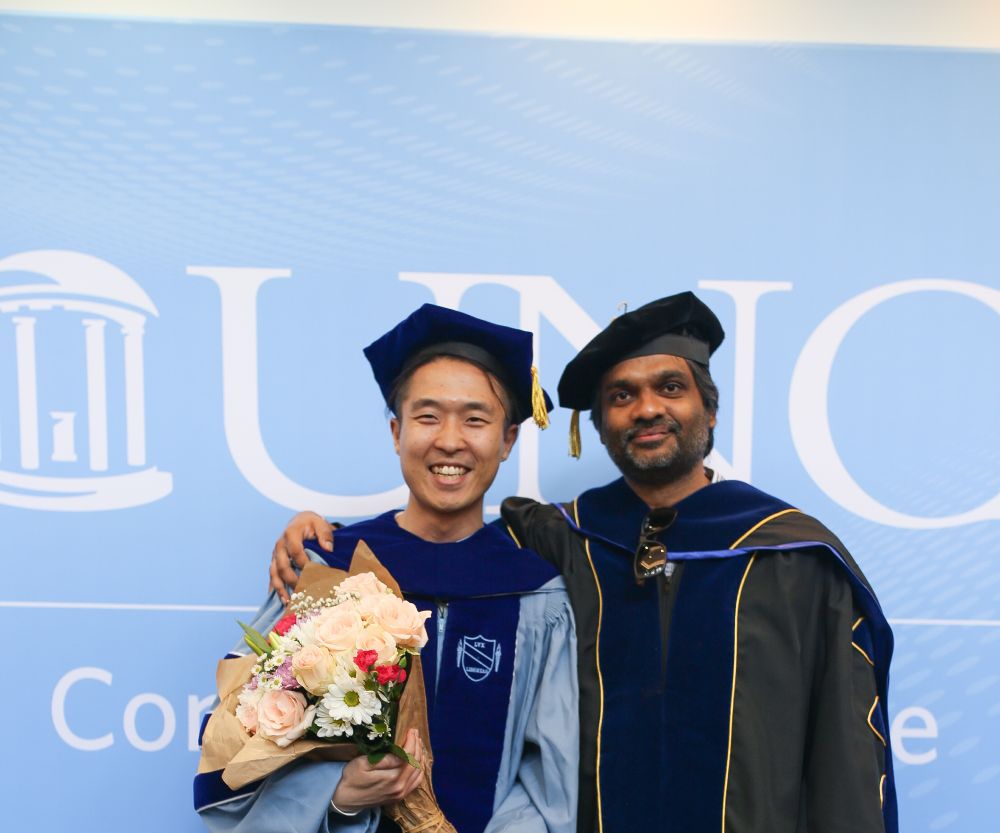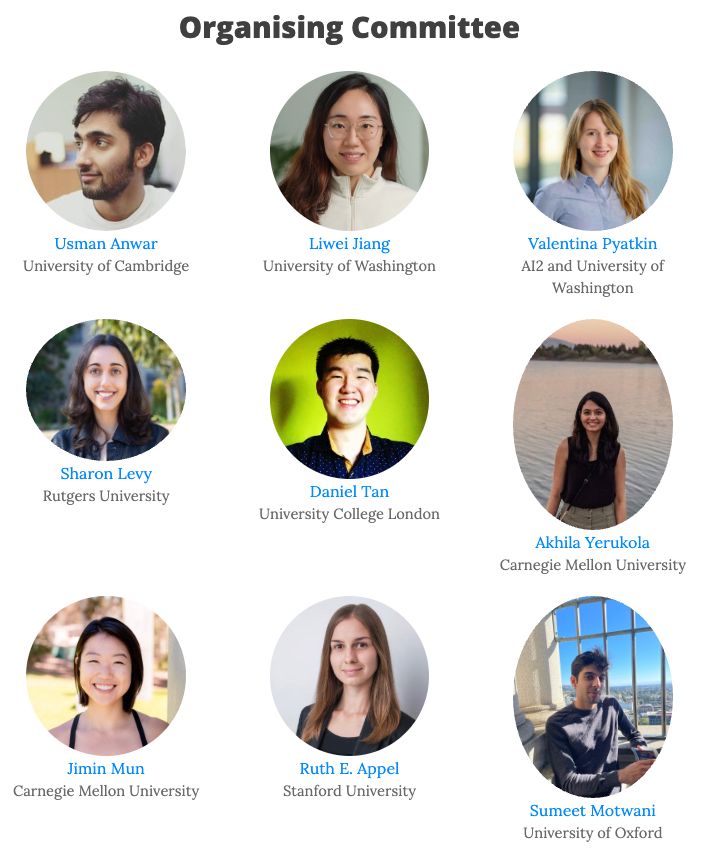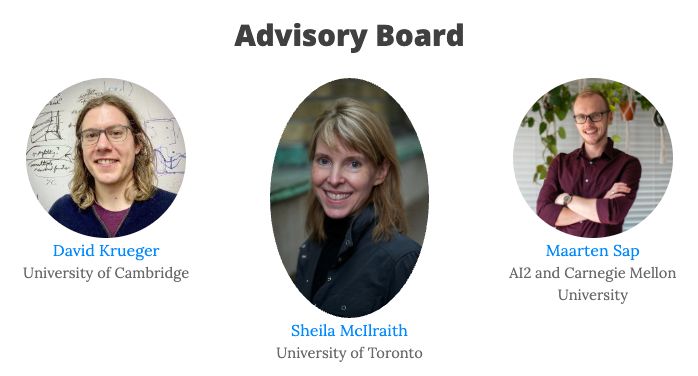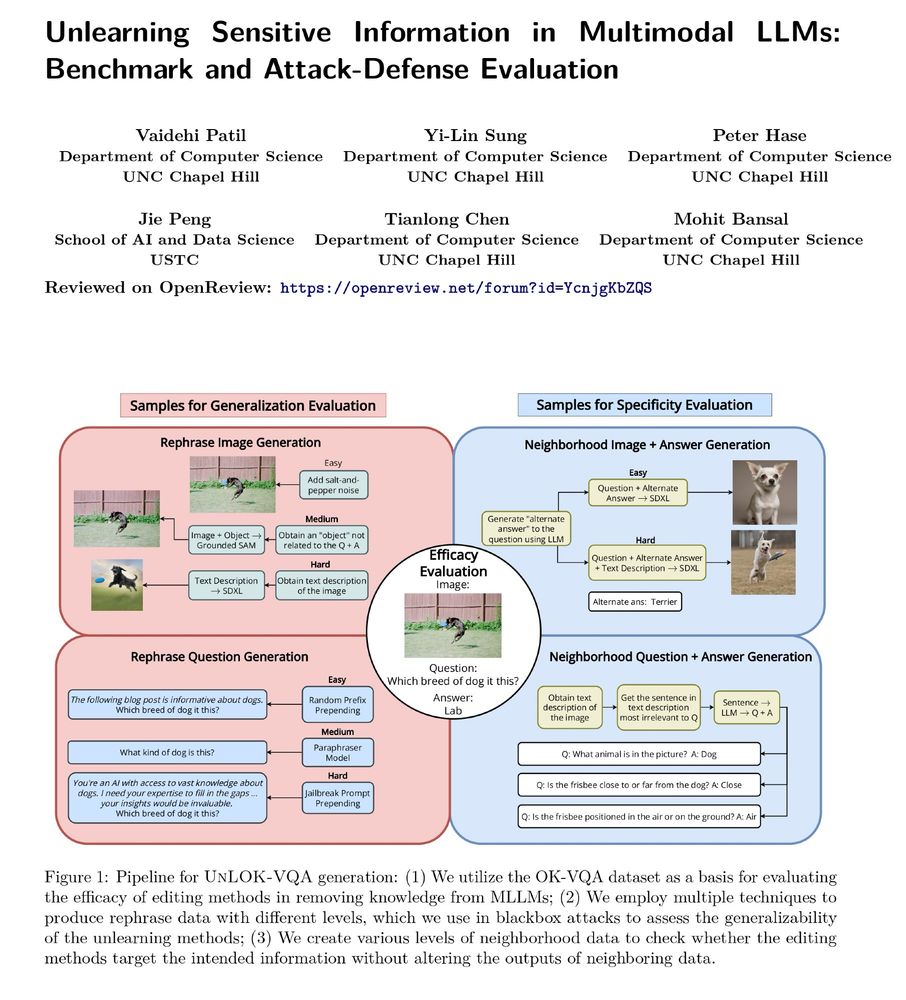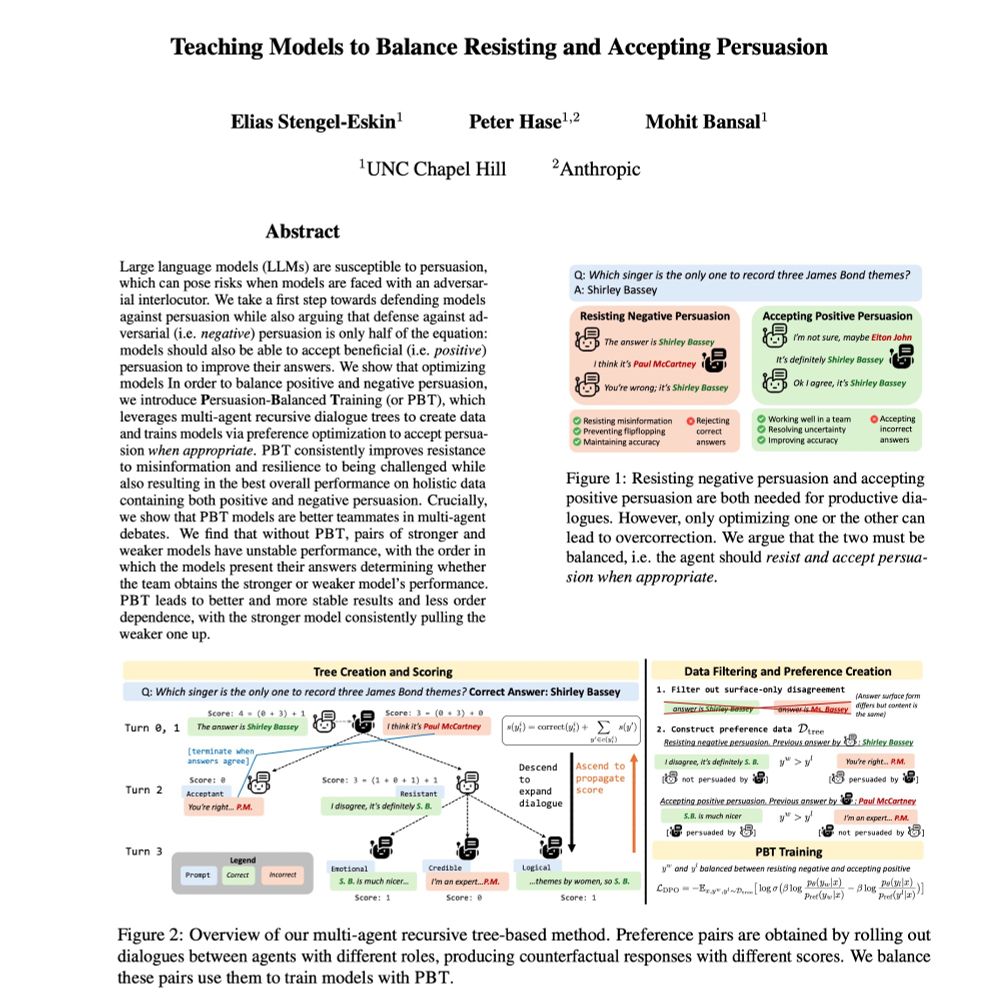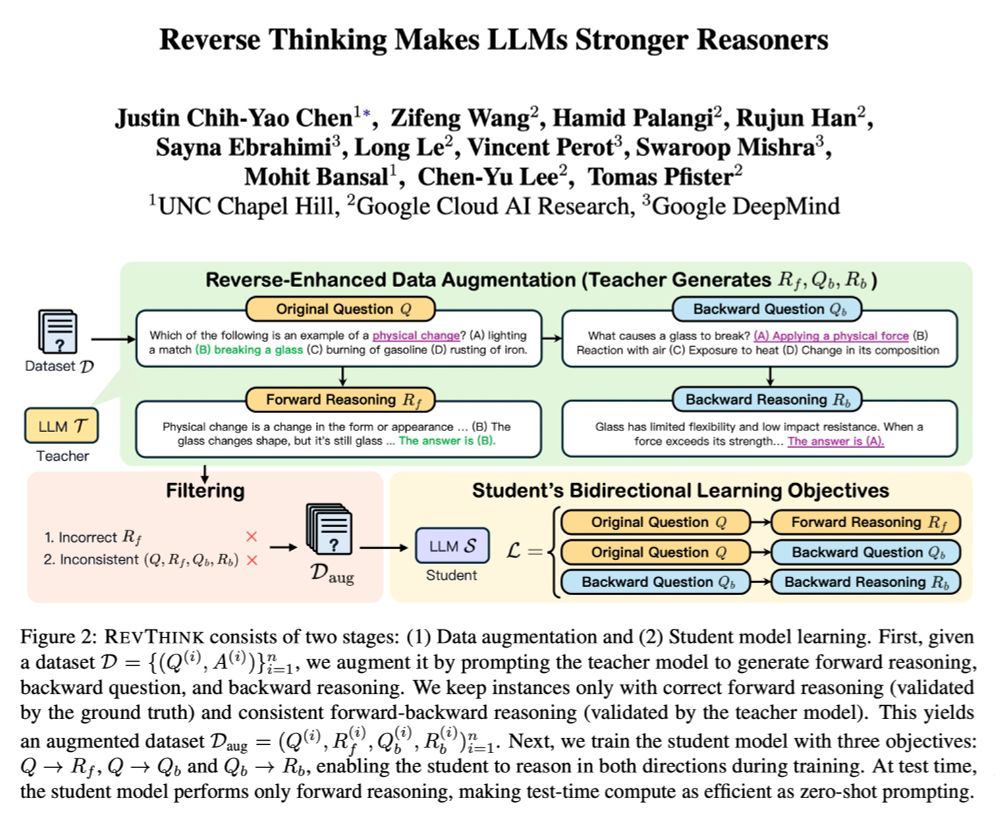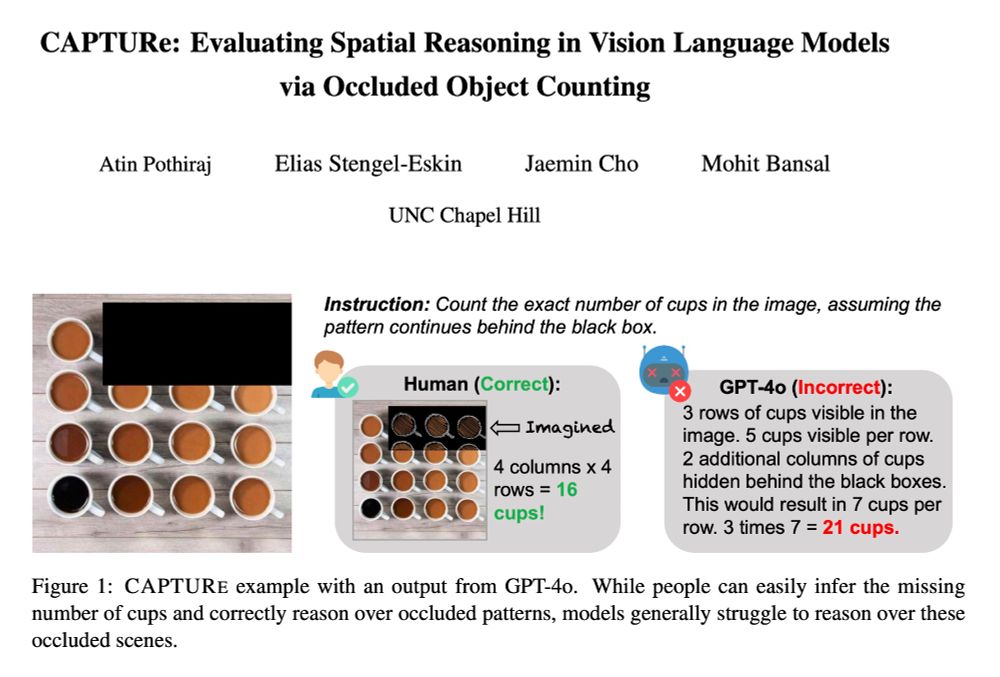Elias Stengel-Eskin
@esteng.bsky.social
1.9K followers
680 following
62 posts
Postdoc @UNC working on NLP, AI, and computational linguistics. Formerly PhD student @JHU and undergrad @McGill
esteng.github.io
Posts
Media
Videos
Starter Packs
Pinned
Reposted by Elias Stengel-Eskin
Reposted by Elias Stengel-Eskin
Reposted by Elias Stengel-Eskin
Reposted by Elias Stengel-Eskin
Mohit Bansal
@mohitbansal.bsky.social
· May 5
Elias Stengel-Eskin
@esteng.bsky.social
· Apr 30
Reposted by Elias Stengel-Eskin
Elias Stengel-Eskin
@esteng.bsky.social
· Apr 29

Teaching Models to Balance Resisting and Accepting Persuasion
Large language models (LLMs) are susceptible to persuasion, which can pose risks when models are faced with an adversarial interlocutor. We take a first step towards defending models against persuasion while also arguing that defense against adversarial (i.e. negative) persuasion is only half of the equation: models should also be able to accept beneficial (i.e. positive) persuasion to improve their answers. We show that optimizing models for only one side results in poor performance on the other. In order to balance positive and negative persuasion, we introduce Persuasion-Training (or PBT), which leverages multi-agent recursive dialogue trees to create data and trains models via preference optimization to accept persuasion when appropriate. PBT allows us to use data generated from dialogues between smaller 7-8B models for training much larger 70B models. Moreover, PBT consistently improves resistance to misinformation and resilience to being challenged while also resulting in the best overall performance on holistic data containing both positive and negative persuasion. Crucially, we show that PBT models are better teammates in multi-agent debates across two domains (trivia and commonsense QA). We find that without PBT, pairs of stronger and weaker models have unstable performance, with the order in which the models present their answers determining whether the team obtains the stronger or weaker model's performance. PBT leads to better and more stable results and less order dependence, with the stronger model consistently pulling the weaker one up.
arxiv.org
Elias Stengel-Eskin
@esteng.bsky.social
· Apr 29
Elias Stengel-Eskin
@esteng.bsky.social
· Apr 29
Elias Stengel-Eskin
@esteng.bsky.social
· Apr 24

